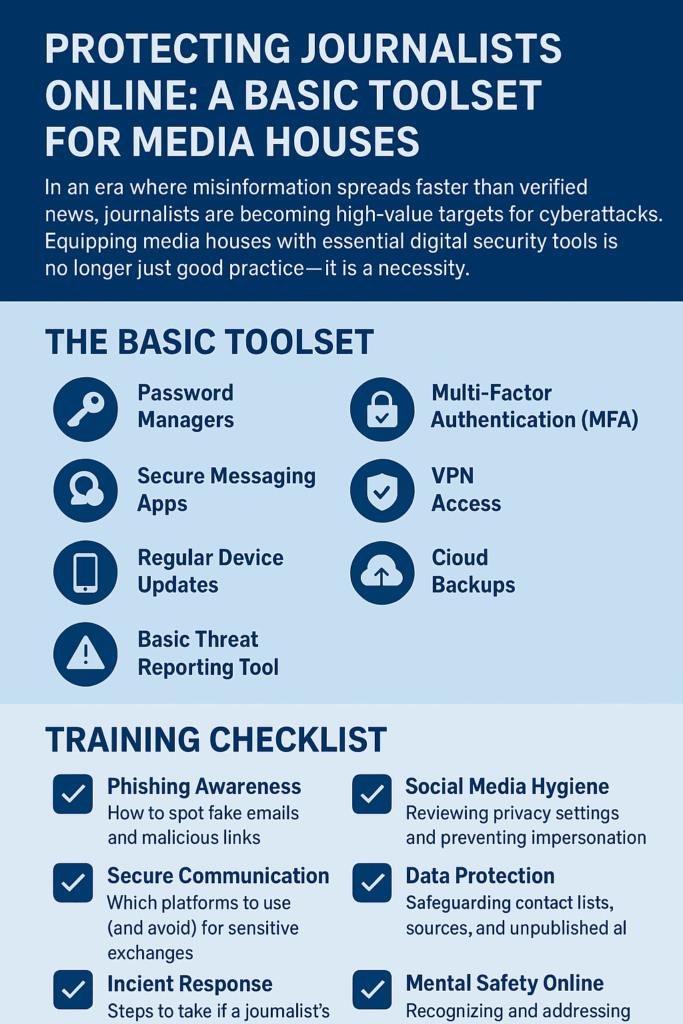In an era where misinformation spreads faster than verified news, journalists are becoming high-value targets for cyberattacks. Hackers, troll farms, and surveillance actors see newsrooms as gateways to public influence, making media professionals especially vulnerable online. Protecting journalists is no longer optional—it is essential to safeguarding press freedom itself.
Why Journalists Are at Risk
From phishing scams aimed at stealing email logins to spyware targeting investigative reporters, the threats journalists face are increasingly sophisticated. Beyond personal risks, a compromised journalist can expose confidential sources, unpublished investigations, and sensitive editorial strategies.
Media houses in Ghana and across Africa often operate with tight budgets, but that cannot excuse neglecting digital safety. Protecting journalists online is as critical as providing them with notebooks, cameras, or press accreditation.
The Basic Toolset for Newsrooms
Every media organization—whether a large broadcaster or a small community newsroom—should equip its journalists with these fundamental digital security tools:
-
Password Managers – To ensure unique, strong logins for all accounts.
-
Multi-Factor Authentication (MFA) – Adds an extra layer of protection beyond passwords.
-
Secure Messaging Apps – End-to-end encrypted platforms like Signal or WhatsApp for sensitive conversations.
-
VPN Access – Protects internet connections, especially on public Wi-Fi.
-
Regular Device Updates – Phones, laptops, and newsroom servers must stay updated against vulnerabilities.
-
Cloud Backups – Ensures that critical files and investigations are not lost to hacks or hardware failures.
-
Basic Threat Reporting Tool – A channel for journalists to quickly report suspicious emails, hacked accounts, or harassment attempts.
Training Checklist for Media Houses
Technology alone is not enough training is the other half of the equation. Media managers should institutionalize regular workshops with the following checklist:
-
✅ Phishing Awareness: How to spot fake emails and malicious links.
-
✅ Secure Communication: Which platforms to use (and avoid) for sensitive exchanges.
-
✅ Social Media Hygiene: Reviewing privacy settings and preventing impersonation.
-
✅ Data Protection: Safeguarding contact lists, sources, and unpublished material.
-
✅ Incident Response: Steps to take if a journalist’s account is hacked or their device compromised.
-
✅ Mental Safety Online: Recognizing and addressing harassment, trolling, and digital burnout.
Conclusion
If journalism is the oxygen of democracy, then digital safety is the mask that allows journalists to breathe freely in a polluted online space. Media houses must treat cybersecurity not as a luxury but as a newsroom essential. Protecting journalists online ensures not only their safety but also the credibility of the news and the trust of the public.
The next front in press freedom is digital. And it begins with a password reset, an MFA activation, and a newsroom-wide commitment to resilience.


